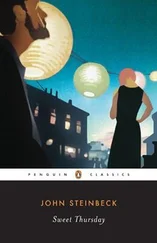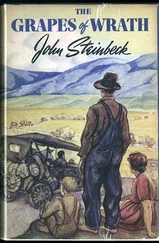John Steinbeck - Once there was a war
Здесь есть возможность читать онлайн «John Steinbeck - Once there was a war» весь текст электронной книги совершенно бесплатно (целиком полную версию без сокращений). В некоторых случаях можно слушать аудио, скачать через торрент в формате fb2 и присутствует краткое содержание. Город: New York, Год выпуска: 1960, Издательство: Bantam Books, Жанр: Классическая проза, на английском языке. Описание произведения, (предисловие) а так же отзывы посетителей доступны на портале библиотеки ЛибКат.
- Название:Once there was a war
- Автор:
- Издательство:Bantam Books
- Жанр:
- Год:1960
- Город:New York
- ISBN:нет данных
- Рейтинг книги:3 / 5. Голосов: 1
-
Избранное:Добавить в избранное
- Отзывы:
-
Ваша оценка:
- 60
- 1
- 2
- 3
- 4
- 5
Once there was a war: краткое содержание, описание и аннотация
Предлагаем к чтению аннотацию, описание, краткое содержание или предисловие (зависит от того, что написал сам автор книги «Once there was a war»). Если вы не нашли необходимую информацию о книге — напишите в комментариях, мы постараемся отыскать её.
Once there was a war — читать онлайн бесплатно полную книгу (весь текст) целиком
Ниже представлен текст книги, разбитый по страницам. Система сохранения места последней прочитанной страницы, позволяет с удобством читать онлайн бесплатно книгу «Once there was a war», без необходимости каждый раз заново искать на чём Вы остановились. Поставьте закладку, и сможете в любой момент перейти на страницу, на которой закончили чтение.
Интервал:
Закладка:
But then came the war and the building of thousands of ships and the transporting of thousands of men overseas by airplane and every single one becomes a Short Snorter. There are hundreds of thousands of Short Snorters now who have actually flown over an ocean and there are further hundreds of thousands who carry signed bills. And the new Short Snorter goes much farther than having his bill signed by the crew which carried him on his initial crossing. The custom has grown to have the bill signed by everyone you come across. At a bar you ask your drinking companion to sign your bill. You ask generals and actors and senators to sign your bill.
With the growing autographing one bill soon was not enough. You procured another bill and stuck it with Scotch tape to your first bill. Then the thing went farther. You began to collect bills from other countries. To your American dollar bill you stuck a one-pound English note, and to it a fifty-franc Algerian note, and to it a hundred-lira bill. Every place you went you stuck the money to your growing Short Snorter until now there are people who have streamers eight and ten feet long, which, folded and rolled, make a great bundle in the pocket, and these streamers are covered with thousands of names and represent besides considerable money. Even the one-dollar original is disappearing. Many new Short Snorters use $20 bills and some even $100 bills.
These are the new autograph books. The original half of the joke has been lost. In bars, in airports, in clubs, the first thing that must be done is a kind of general exchange of signatures. Serious and intelligent gentlemen sign one another’s bills with an absolute lack of humor. If the party is fairly large it might take an hour before everyone has signed the bill of everyone else. Meanwhile the soup gets cold.
There are favorite places on the bill for honored and desirable autographs. The little space under Morgenthau’s name is one such. The wide space beside the portrait on the bill is another. If you get an autograph you want to show, you have it written on a clear space, but if it is just one of the run-of-the-mill signatures it is put any place in the green part, where it hardly shows up at all. It is a frantic, serious-minded, insane thing. Men of dignity scramble for autographs on their Short Snorters. A special case, usually made of cellophane, is sometimes carried to house the bill, or the long streamers of bills, because these treasures are handled so much that they would fall to pieces if they were not protected.
The effort and time involved in this curious thing is immense. Entertainers who travel about to our troops sign literally thousands of Short Snorter bills. For no longer do people have to fly an ocean to be members. The new method is that any Short Snorter can create a new Short Snorter. The club is pyramiding. Probably there are ten million Short Snorters now and every day new thousands begin to scribble on their bills. It would be interesting to know how many bills are withdrawn from circulation to be used as autograph books. They must run into the millions.
The use of large bills as Short Snorter bills has a curious logic behind it. The man or woman who used a $20 or $100 bill feels that he or she will not spend this money because of the signatures on it, but he also feels that if he needs to he can spend it. Thus he has a nest egg or mad money and a treasure, too. He will not toss it over a bar nor put it in a crap game, but if he really should get into a hole he has this money with him.
Very curious practices grow out of a war and surely none more strange than this one has taken over the public recently.
THE BONE YARD
A NORTH AFRICAN POST ( Via London ), September 5, 1943 —
On the edge of a North African city there is a huge used tank yard. It isn’t only tanks, either. It is a giant bone yard, where wrecked tanks and trucks and artillery are brought and parked, ready for overhauling. There are General Shermans with knocked-out turrets and broken tracks, with engines gone to pieces. There are trucks that have fallen into shell holes. There are hundreds of wrecked motorcycles and many broken and burned-out pieces of artillery, the debris of months of bitter fighting in the desert.
On the edge of this great bone yard are the reconditioning yards and the rebuilding lines. Into the masses of wrecked equipment the Army inspectors go. They look over each piece of equipment and tag it. Perhaps this tank, with a German.88 hole drilled neatly through the turret, will go into the fight again with a turret from the one next to it, which has had the tracks shot from under it. Most of the tanks will run again, but those which are beyond repair will furnish thousands of spare parts to take care of the ones which are running. This plant is like the used-car lots in American cities, where you can, for a small price, buy the gear or the wheel which keeps your car running.
The engines are removed from the wrecked trucks and put on the repair lines. Here a complete overhaul job is done, the linings of the motors rebored, with new rings, tested and ready to go finally into the paint room, where they are resprayed with green paint. Housings, gears, clutch plates are cleaned with steam, inspected, and placed in bins, ready to be drawn again as spare parts. One whole end of the yard is piled high with repaired tires. Hundreds of men work in this yard, putting the wrecked equipment back to work.
Here is an acre of injured small artillery, 20- and 37-mm. anti-tank guns. Some of them have been fired so long that their barrels have burned out. Some of them have only a burst tire or a bent trail. These are sorted and put ready for repair. The barrels are changed for new ones, and the old ones go to the scrap pile. For when everything usable has been made use of there is still a great pile of twisted steel which can be used as nothing but scrap metal. But the ships which bring supplies to the Army from home are going back. They take their holds full of this scrap to go into the making of new steel for new equipment.
It is interesting to see the same American who, a few months ago, was tinkering with engines in a small-town garage now tinkering with the engine of a General Grant tank. And the man hasn’t changed a bit. He is still the intent man who is good with engines. He isn’t even dressed very much differently, for the denim work clothes are very like the overalls he has been wearing for years. Beside these men work the French and the Arabs. They are learning from our men how to take care of the machinery that they may use. They learn quickly but without many words, for most of our men cannot speak the language of the men who are helping them. It is training by sign language and it seems to work very well.
The wrecked equipment comes in in streams from the battlefields. Modern war is very hard on its tools. While in this war fewer men are killed, more equipment than ever is wrecked, for it seems almost to be weapon against weapon rather than man against man.
But there are many sad little evidences in the vehicles. In this tank which has been hit there is a splash of blood against the steel side of the turret. And in this burned-out tank a large piece of singed cloth and a charred and curled shoe. And the insides of a tank are full of evidences of the men who ran it, penciled notes written on the walls, a telephone number, a sketch of a profile on the steel armor plate. Probably every vehicle in the whole Army has a name, usually the name of a girl but sometimes a brave name like Hun Chaser. That one got badly hit. And there is a tank with no track and with the whole top of the turret shot away by a heavy shell, but on her skirt in front is still her name and she is called Lucky Girl . Every one of these vehicles lying in the wreck yard has some tremendous story, but in many of the cases the story died with the driver and the crew.
Читать дальшеИнтервал:
Закладка:
Похожие книги на «Once there was a war»
Представляем Вашему вниманию похожие книги на «Once there was a war» списком для выбора. Мы отобрали схожую по названию и смыслу литературу в надежде предоставить читателям больше вариантов отыскать новые, интересные, ещё непрочитанные произведения.
Обсуждение, отзывы о книге «Once there was a war» и просто собственные мнения читателей. Оставьте ваши комментарии, напишите, что Вы думаете о произведении, его смысле или главных героях. Укажите что конкретно понравилось, а что нет, и почему Вы так считаете.









